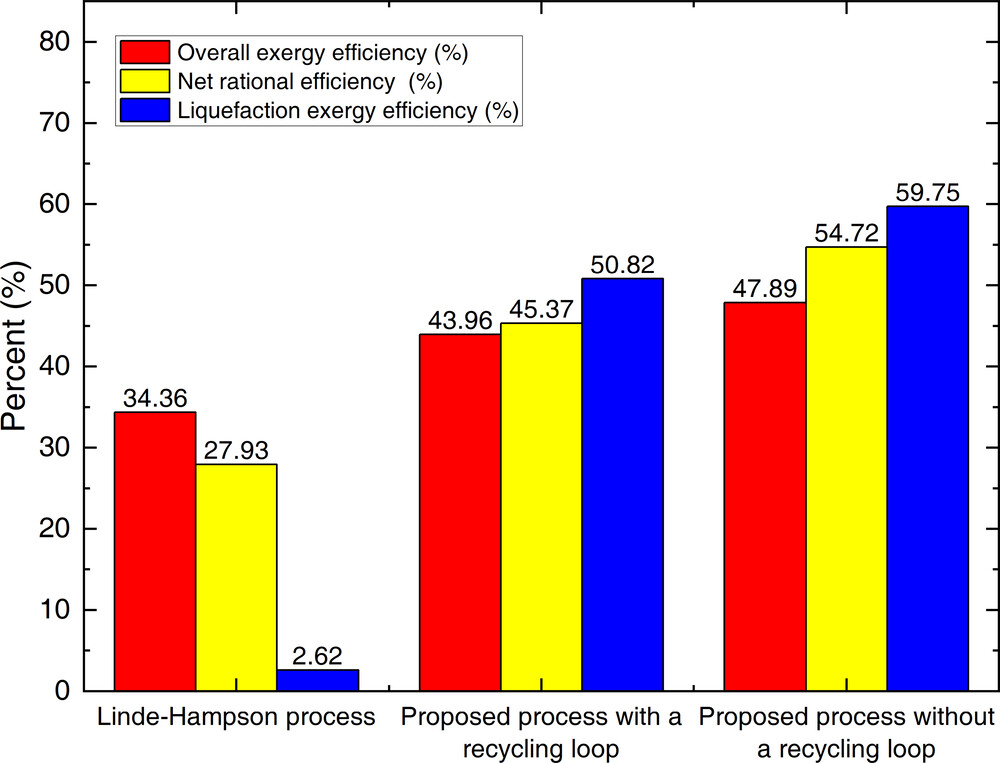Environment & Energy
Related: About this forumA Rube Goldberg Scheme to Clean Up the Filth of Hydrogen Manufacturing.
The paper to which I will briefly refer in this post is this one: Utilization of Cold Energy of LNG for Carbon Dioxide Capture and Liquefaction in Amine-Based SMR Hyeon-won Jeong, Vinh Khanh Nguyen, Shu Wang, Ricardo Gutfraind, Ruichang Xiong, Jerry Wareck, Samantha Neilsen, and W. Jaewoo Shim Industrial & Engineering Chemistry Research 2024 63 (27), 12002-12015.
Among many popular lies we tell ourselves, one of the biggies is that "hydrogen is 'green'." Actually hydrogen, which has many industrial applications and is thus a valuable captive intermediate, is overwhelmingly made from dangerous fossil fuels involving exergy destruction, that is, the waste of energy. You hear all kinds of dishonest bullshit around here and elsewhere about the 50 year old marketing ploy - which I regard as a front for the fossil fuel industry in a "bait and switch" scheme - to hype hydrogen cars, hydrogen trucks, hydrogen this and hydrogen that, and basically, because hydrogen is overwhelmingly made from dangerous fossil fuels, it is the promotion of dangerous fossil fuels which has led to the extreme global heating we now observe everywhere on Earth.
I make this point often, linking my numerical and referenced analysis of the scam:
A Giant Climate Lie: When they're selling hydrogen, what they're really selling is fossil fuels.
"SMR" to which the title of the paper refers is "Steam Methane Reforming." This process, which is the largest source of hydrogen production - coal and petroleum are also prominently utilized - involves the production of heat and the use of methane, both of which involve the dumping of the dangerous fossil fuel waste carbon dioxide directly into the planetary atmosphere, which it is destroying.
A note: The process discussed in this paper is interesting in the sense that despite my "Rube Goldberg" sarcasm, pursues an idea I actually support, albeit in the case of the use of nuclear energy, that is, process intensification via heat networks. In the case of the paper under discussion, the system is disconnected from the original heat source (and energy wasting process) involved in the compression and temperature reduction of dangerous natural gas, which is imported to Korea, where the authors of the paper work.
The process described involves using the cold temperatures involved in importing liquified dangerous natural gas, to capture the carbon dioxide, although there is no discussion of what to do with it after its captured, other than to vaguely refer to the fact that carbon dioxide has some industrial uses, although hardly enough to matter at this point. (Over the long term, this might be addressed, but right now, the amount of industrial CO2 is high enough to accommodate the amount being dumped into the atmosphere routinely.)
From the text:
The steam reforming process, which uses various hydrocarbons (methane, propane, butane) and their derivatives (methanol, ethanol, acetic acid, glycerol) as fuels, is currently considered the most economical method for hydrogen production. (2) Among the fuels used for the steam reforming process, LNG containing mainly methane is one of the most promising due to its large reserves and high availability throughout the world. The International Energy Agency (IEA) reports that more than 95% of the global demand for hydrogen is met through the reforming of fossil fuels (∼76.5 million tons in 2019), of which more than half is generated through the steam methane reforming (SMR) process. (2) In South Korea, LNG is mainly supplied domestically via LNG terminals through LNG tankers, as shown in Figure 1. There are five LNG terminals (Incheon, Pyeongtaek, Tongyeong, Samcheok, and Jeju) operated by Korea Gas Corporation (KOGAS) with a total capacity of 11.56 million m3 in 74 tanks. (3) KOGAS plans to invest $4.06 billion by 2030 in the research and development of 25 hydrogen production facilities and 700 km of new pipeline. (4) The LNG infrastructure will be improved and expanded in the foreseeable future, making LNG a well-suited hydrogen source to meet the demands from both residential and industrial usage as well as on-site reforming systems...
The paper is right up front: Hydrogen is overwhelmingly made, at an exergy loss, from fossil fuels.
The honesty continues:
There's a lot of nice process diagrams and mathematical analysis in the paper, which I will not have time to discuss in any detail. Basically the idea is to use the low temperatures of the imported liquified dangerous natural gas to liquify carbon dioxide. There is some benefit in improving the exergy destruction associated with hydrogen production, but the production of hydrogen still involves considerable such destruction, and the hydrogen is thus still pretty damned dirty.
A graphic from the paper:

The caption:
None of this, however, will make hydrogen "green." It's dirty.
Have a nice Sunday.